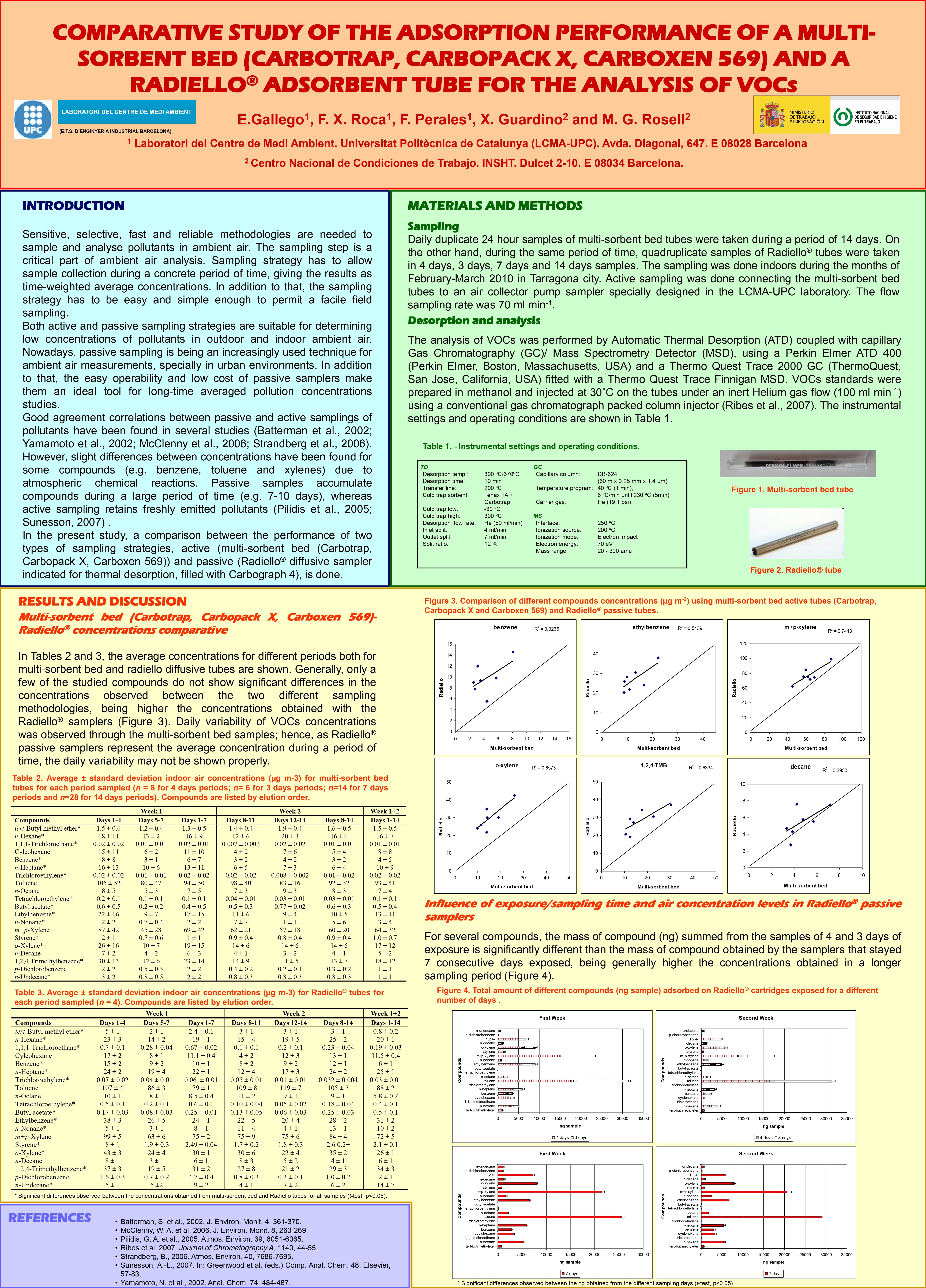Póster Técnico: Comparative study of the adsorption performance of an active multi-sorbent bed tube (Carbotrap, Carbopack X, Carboxen 569) and a Radiello® diffusive sampler for the analysis of VOCs - Año 2011
Catalogado
Precio
Publicación gratuita
Resumen
Sensitive, selective, fast and reliable methodologies are needed to sample and analyse pollutants in ambient air. The sampling step is a critical part of ambient air analysis. Sampling strategy has to allow sample collection during a concrete period of time, giving the results as time-weighted average concentrations. In addition to that, the sampling strategy has to be easy and simple enough to permit a facile field sampling.
Both active and passive sampling strategies are suitable for determining low concentrations of pollutants in outdoor and indoor ambient air. Nowadays, passive sampling is being an increasingly used technique for ambient air measurements, specially in urban environments. In addition to that, the easy operability and low cost of passive samplers make them an ideal tool for long-time averaged pollution concentrations studies.
Good agreement correlations between passive and active samplings of pollutants have been found in several studies (Batterman et al., 2002; Yamamoto et al., 2002; McClenny et al., 2006; Strandberg et al., 2006). However, slight differences between concentrations have been found for some compounds (e.g. benzene, toluene and xylenes) due to atmospheric chemical reactions. Passive samples accumulate compounds during a large period of time (e.g. 7-10 days), whereas active sampling retains freshly emitted pollutants (Pilidis et al., 2005; Sunesson, 2007) .
In the present study, a comparison between the performance of two types of sampling strategies, active (multi-sorbent bed (Carbotrap, Carbopack X, Carboxen 569)) and passive (Radiello® diffusive sampler indicated for thermal desorption, filled with Carbograph 4), is done.


